As the homeless crisis worsens, unhoused people in these rural areas remain 'invisible'
RALEIGH, N.C. − A growing homeless crisis has been stretching to far-flung corners of the Tar Heel State, with tent encampments popping up in rural areas and demand for social services spiking in major cities, putting more pressure on already short-staffed shelters.
Nationwide, homelessness increased in 2023 to more than any year on record, and people are becoming unhoused in urban and suburban neighborhoods, small country towns and outlying rural communities as the affordable housing crisis worsens.
As Raleigh has increasingly morphed into the seat of a thriving metro region in recent years, hardship has become more visible: A mother and her two small children camp out along a highway off-ramp holding signs letting drivers know they need money for food. In a suburban strip mall, a man asks diners seated on a patio for cash because he hasn't gotten his first paycheck from his job at a restaurant chain yet.
"You see the need," Raleigh Mayor Mary-Ann Baldwin told USA TODAY this month. "People here didn't see tent cities before. Now you do."
Rural homelessness, particularly unhoused people living outdoors, has also been on the rise for years, according to the U.S. Department of Housing and Urban Development. Nationwide, nearly one in five Americans lacking housing are in rural areas, defined as more than 10 miles away from an urbanized area.
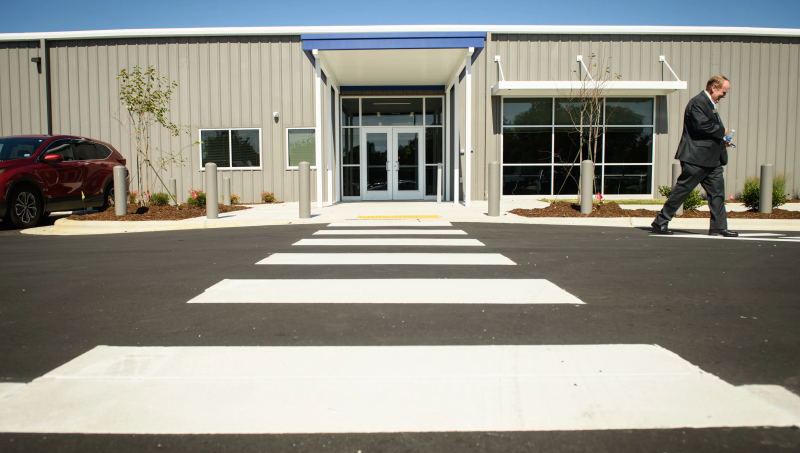
In the small towns and rural counties that dot the map between North Carolina's major cities, resources don't exist for people who become unhoused, service providers told USA TODAY. People in rural areas struggling with substance use, evictions, past incarceration and unemployment come to cities like Raleigh for the help that's only available there.
"That divide between rural and urban is brutal in North Carolina and it makes it very difficult to figure out a pathway forward for our future," said Gene R. Nichol, a law professor at the University of North Carolina at Chapel Hill and author of the book The Faces of Poverty in North Carolina: Stories from Our Invisible Citizens.
It's not just in North Carolina. Some rural areas in states like Tennessee and Florida reported among the highest rates of unsheltered homelessness in the country, with more than 80% of unhoused people living outdoors in tents, cars or other makeshift structures, according to HUD.
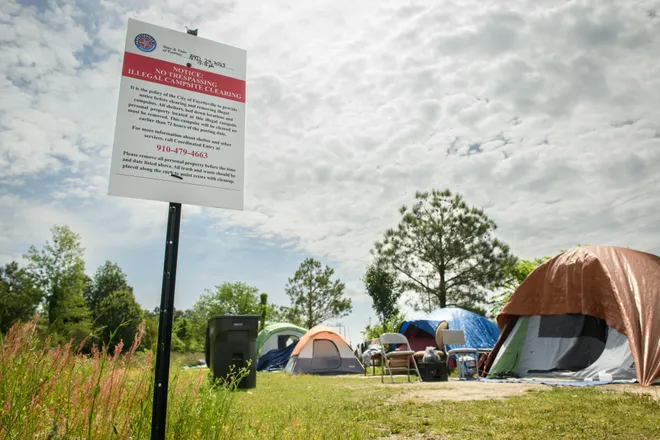
In Raleigh, homeless service providers said more unhoused people than ever have jobs and are earning income and more families with children are showing up at shelters after being kicked out onto the street.
About 90 minutes south, shelter staff make do with far less resources in Fayetteville, a small city where unhoused people from nearby, deeply rural counties converge seeking social services. The need is so great that local leaders last year opened a new daytime drop-in shelter.
"We are expanding to fill that gap, but there's not a lot of help here. We're just doing the best we can," said Craig Morrison, executive director of Fayetteville Area Operation Inasmuch, where employees are doing double-duty to help staff the new daytime center.

Rural homelessness is more 'invisible,' service providers say
Buncombe County, home to Asheville, has a homeless program manager for the first time to respond to the large need faced by people living unsheltered in and around tiny mountain towns, where deep poverty forces some to live in hidden-away places unfit for human habitation.
This year, the county is expanding its rural outreach efforts, making contact with more people living in isolation from services, said Lacy Hoyle, the new manager.
"It can be folks staying in campers or RVs that are not connected to power or water. It might be a group of people staying in an abandoned house or a condemned house or very dilapidated structure that's out in a rural area," she said, noting that it's also common for people to pitch tents and "kind of hang out on a corner" of private property, further complicating outreach efforts.
Recently, she said someone living in an RV on private property had their power cut off by the landowner "right before probably the coldest weekend that we have had here this winter," she said. The man was able to seek protection during the cold snap, but then planned to return to his RV immediately after, she said.
To put a dent in the crisis, Hoyle said policymakers must start creating more affordable housing units in rural areas, and quickly. More housing vouchers, landlords who accept them and more "deeply affordable" units are desperately needed so rural residents who earn poverty-level incomes, like $1,000 per month, can cover rent with the recommended 30% of their paycheck, she said.
The severe lack of below-market rate apartments is pervasive nationwide, she added. This year, Harvard University researchers found more than half of Americans renters can no longer afford their monthly bill, for example.
But the national conversation about a lack of affordable housing still feels like an urban and suburban issue, Hoyle said, even though "it's absolutely applicable in the rural areas too," she said.
"Those examples of people living outside, even with kids, they are here, invisible to most of us," Nichol said. "Those challenges are bad in our urban areas, but they tend to be even larger in rural areas," he added, referring to what he called "extreme low-wage jobs."
In Buncombe County, Hoyle's team is focusing on meeting people experiencing rural homelessness where they're at, and letting them know about services available in Asheville.
"So instead of going to an encampment under an overpass, you might be hiking through the woods to get to a river where somebody might be camped out there," Hoyle said. "That's difficult to do."
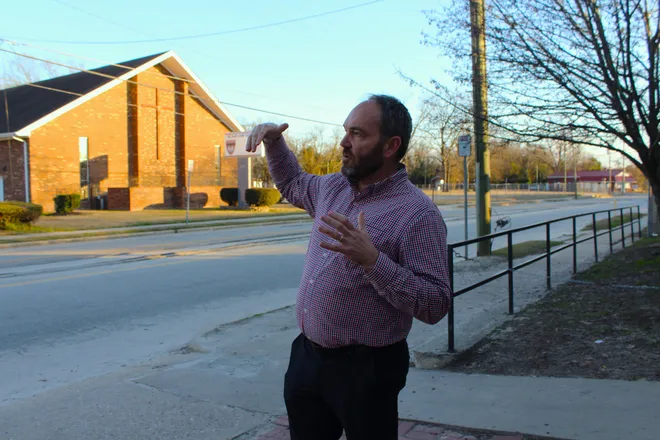
Fayetteville shelter stuck in the middle of urban-rural divide
South of Raleigh, deep brown and grassy soil turns into sandy hills dotted with thin pine trees approaching Fayetteville. Low-lying strip malls, churches and chain restaurants stretch west from downtown, which sits near the banks of the famous Cape Fear River. Besides the Fort Liberty military base, the city's local Walmart is one of its biggest employers.
The homeless crisis in Fayetteville is one of the worst in the country by some measures tracked by HUD. Its relatively small footprint on the map combined with its residents' outsized need means the homeless crisis there became one of the hardest to solve in the state, service providers said.
"We know there's a community out there that no one sees," said Barbara Spier, deputy director at the Inasmuch shelter.
A greater percentage of unhoused people in Fayetteville live outdoors compared to almost anywhere in the country, with over 80% of unhoused residents living in tents, on the street or other places unfit for human habitation, according HUD data.
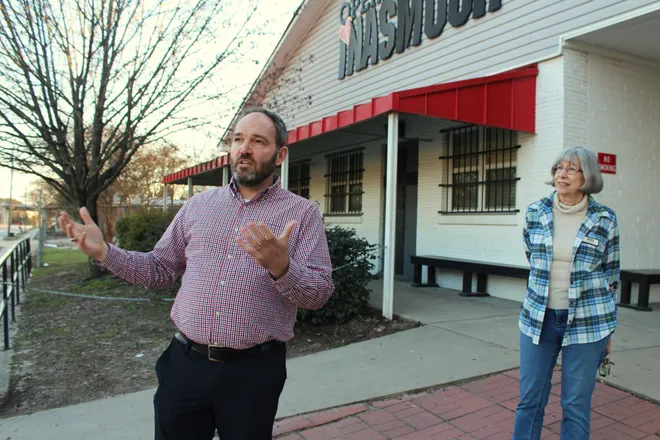
People are getting evicted after new landlords begin charging more rent for single-family homes and apartments, Morrison, also of Inasmuch, said. On top of that, unhoused people from poorer, more rural counties visit his shelter seeking help that doesn't exist where they first became homeless.
"We get a ton from Robeson County," said John Antoine Miner, another director at the Inasmuch shelter. "One of the other counties that I think is a hotspot for us in this immediate area is Hoke County," he said, referring to areas about 40 miles away from the shelter.
Despite the acute need for shelter in Fayetteville, which has a population of about 200,000, Inasmuch isn't eligible for the same big private grants earmarked for shelters in Mecklenburg, Wake and Guilford counties − home to the state's three largest cities, according to Spier. She said she was recently excited to apply for a grant from a major banking company, until she read the fine print and immediately saw her shelter was ineligible due to its relatively small size and far distance from the nearest metro region.
"The funding is driven by businessmen, they're looking for the most bang for the buck," Spier said. "If they can save 50 homeless opposed to 10 homeless that's where their dollars are going to be driven."
However, Fayetteville is still the largest city for hours in several directions, especially stretching to the south.
"That's where addiction is headquartered," Miner said, explaining that he has seen how rural residents are more vulnerable to a large substance use crisis − one that can feel more pervasive than drug problems in downtown urban areas, he said.
"A lot of times when you talk to these guys, there was nothing else occupying their time," he said, referring to substance use. "So that's what they just got involved in and then it became that addiction and then it just carried on and spiraled out of control."
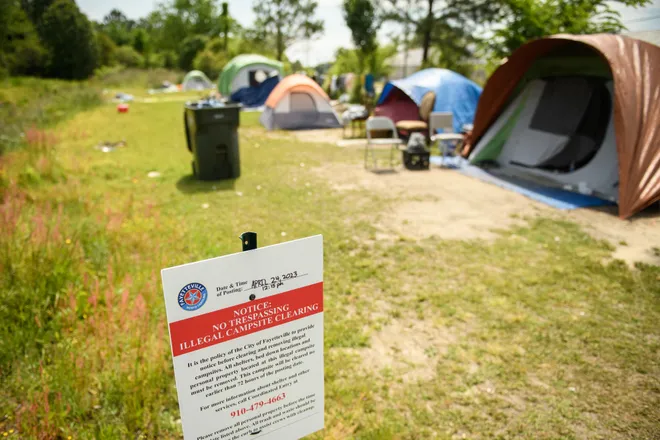
Homelessness increasingly visible in Raleigh, even as local leaders make progress
People come to Raleigh from all over the state − and all over the southeast − seeking social services, and the city's main shelter and resource hub is a model that leaders in Fayetteville and Buncombe County look to for inspiration, they said. Demand at Raleigh shelters is up in the last year, according to local officials, who are working to get people from the streets into housing and keep existing tenants in their homes.
"We do see folks that are coming in from the outlying areas, from other cities or towns or counties around us," said Vance Haywood, chair for Wake County's emergency shelter system.
Like Fayetteville, Raleigh had one of the highest rates of unsheltered homelessness in the country in 2022, at just over 75%.
Getting people housed is key, Baldwin said, and the city and county have been collaborating on creative solutions. Next month, the city will close on their purchase of the former headquarters of the state Division of Motor Vehicles to turn it into affordable housing, the mayor said. At six acres, and sitting on a bus line, it will "really make an impact," she said.
"Because if somebody doesn't have to own a car, they've just saved $10,000 a year," Baldwin said.
Raleigh officials are also purchasing "naturally occurring affordable housing" before private developers can in order to avoid displacing an entire building of low-income tenants, said Baldwin.
The city is working to make much-needed repairs to one such building, while maintaining low rents, she added.
"We made sure that folks were within the technical definition of affordability with only paying 30% of their income to rent," said Emila Sutton, Raleigh's housing and neighborhoods director.
Local leaders are also hoping to buy hotels and motels where some low-income people already live permanently. People can now live in one motel purchased in 2021 using Section 8 housing vouchers because the city paid to put kitchenettes in every room.
Overall, officials said, the city is on track to create an additional 5,700 units of affordable housing by 2026, a goal set in 2016.
"There's an awareness, but there's never been before," Baldwin said. "We know that people are coming here from different areas. But once they come here, they are residents and we have to care for them, and that's what we're committed to."
Disclaimer: The copyright of this article belongs to the original author. Reposting this article is solely for the purpose of information dissemination and does not constitute any investment advice. If there is any infringement, please contact us immediately. We will make corrections or deletions as necessary. Thank you.






